Day of the Dead, or Dia de los Muertos, is celebrated the first two days of November throughout Mexico, as well as in other parts of the world.
Combining aspects of Halloween, a funeral and Marti Gras, the holiday boldly incorporates joy, sorrow, darkness and color.
Experiencing the celebration last year in Oaxaca, Mexico, I found it to be a reminder to live life to the fullest.
Day of the Dead is a huge holiday in many Mexican cities and can be seen in different ways all over Oaxaca.
Colourful skeletons and skulls are everywhere. Whether they are made out of candy, clay, paper mache, tissue paper or wood, Mexican skeletons or calaveras have just as much personality as their flesh and blood counterparts and are famous worldwide for their gaudy humoristic style.

Boney brides, doctors, mariachis, painters and Aztec warriors stare and grin at passersby. They smirk from shop windows and markets, flap and jump in the wind on tissue paper banners. They peek around street corners and loom over you from murals that take up a whole wall.
They are painstakingly molded, chizled, cut, baked and painted to represent the hobbies, passions and occupations of the loved ones who have passed on to the other side.

As with Halloween, costumes are a big part of Day of the Dead.
Many women dress up as “La Catrina” (The Elegant Skull). Originally a 1910 etching print by Jose Guadalupe Posada, she has since become the most iconic image of Day of the Dead and has had songs, poems, paintings and sculptures all dedicated to her.
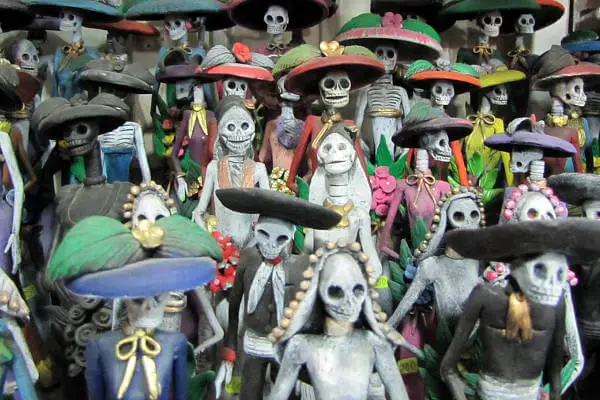
No festival or party is complete without culinary goodies.
For weeks beforehand, the markets overflow with traditional foods like mole, hot chocolate and tamales.

These will be shared in the homes and the panteones, or cemeteries, of Oaxaca with visitors from both worlds.
Sugar skulls and chocolate cadavers smile toothy smiles, waiting to be given as gifts to the living or offerings to the dead. Pan de Muerto, or Bread of the Dead, is sweet bread eaten in honor of the ancestors and family members who have passed on.
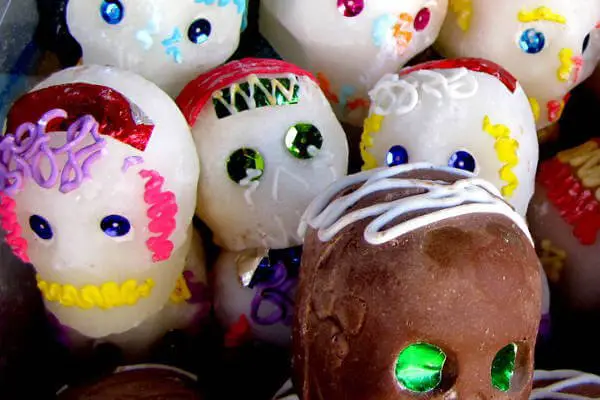
Altars are set up in homes, businesses, main plazas and the various cemeteries around Oaxaca. Photos, marigold flowers (known as the death flower), hot chocolate, fruit, mescal (similar to tequila), papel picado (tissue paper cut-outs) and candles are all key elements seen on most altars.
From the most simple to the most elaborate, the intention is the same: to pay tribute to the deceased and invite them back for one day of the year to celebrate ‘la vida.’
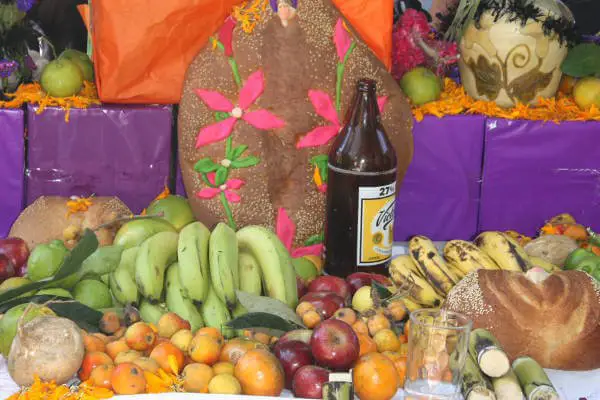
Starting in the afternoon of October 31st, thousands flock to the local cemeteries to prepare for the arrival of the angelitos, the souls of the children.
Small graves are decorated with favorite toys, sweets and flowers to coax the littlest of spirits to come out to play. This is an emotional day.
The main focus, however, in not on grief but on celebrating the precious lives of the angelitos with music, treats and laughter. The party goes on long into the night and only winds down the afternoon of the next day. The tiny souls go back into their world, cuing the adults to make their appearance.
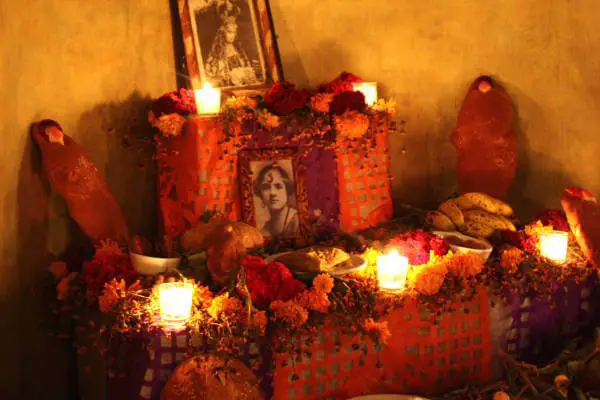
Relatives and friends share bittersweet memories and food in the candlelit darkness while 12-piece bands belt out riotous numbers.
Tamales, hot chocolate laced with mescal and strong black coffee are passed around while merrymakers and grievers dance around tombstones.
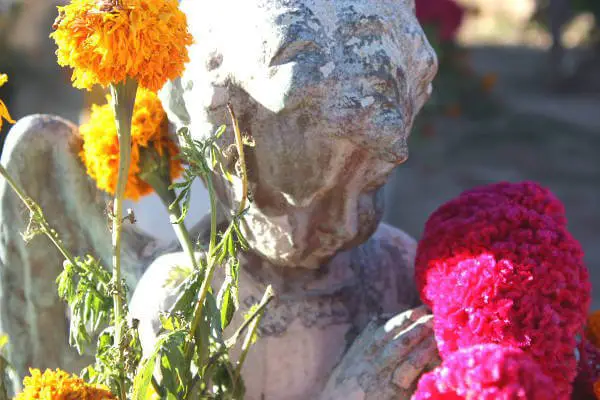
In the colorful darkness, the mix of emotion pulls at the crowd like a wave. Whispers and giggles from the resurrected dead float on the night air, reminding you to live life now.
For recommendations on a place to stay to enjoy the festival check out Sea Side Mexico.
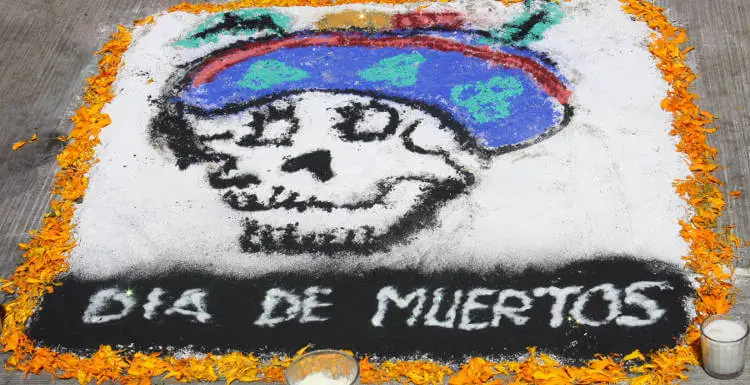
Tara, a lovely blog about one of Mexico’s most intriguing holidays. I was lucky enough to be in Mexico on the Day of the Dead many years ago and was dazzled by the color and fascinated by the philosophy. But this holiday has scary memories for me as well. A small child of my acquaintance gave me a piece of candy that, despite the plastic wrapping, turned out to be unhygienic enough to make me sicker than I have ever been in my life. So to all my fellow Travel Belles, I’ll respectfully suggest that while you admire the decorative candies, you consider carefully what sugary sweets you actually put in your mouth! In spite of that, I have very fond memories of the Day of the Dead, and it was fun to see it so beautifully presented here.
Karen McCann
enjoylivingabroad.com
Beautiful photos and such an informative post! I have always been intrigued by the Day of the Dead traditions and I love the idea of La Catrina!
Such a wonderful collection of photos Tara. I’ve read so many articles on Oaxaca of late that it’s now on my list of destinations I must visit. Hopefully I can time a visit to coincide with Day of the Dead!
Thank you for the nice comments. Day of the Dead is a fascinating holiday to experience and documenting it through photos was a real treat for me.
Day of the dead is an amazing experience in Oaxaca! I have to say we felt akward during the night cemetery tour to see the celebrations and many tourists walking between local families gathered around tombs. But everyone was extremely open minded and locals even seemed to take some pride with their beautifully decorated areas. Overall, definetely a unique experience.